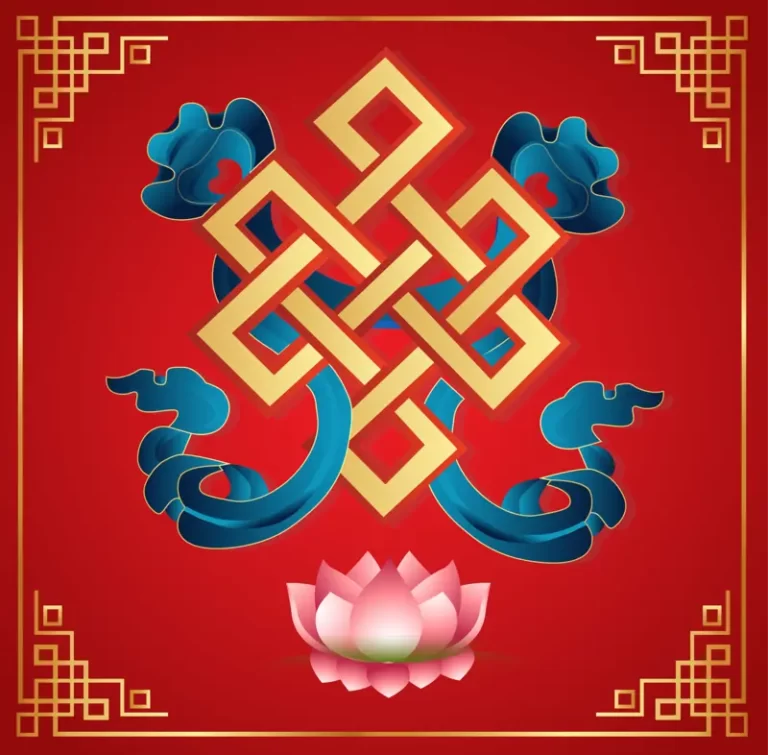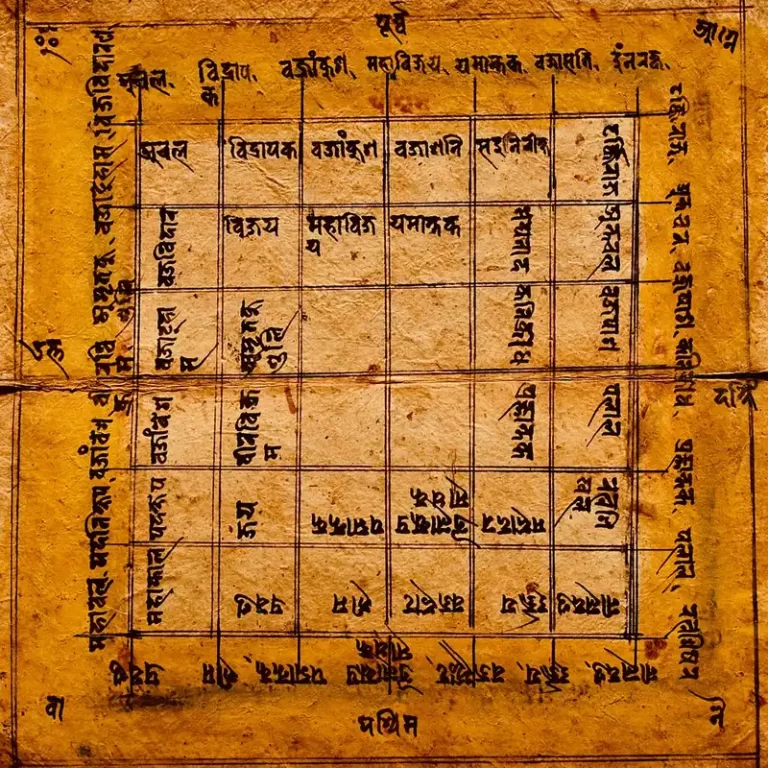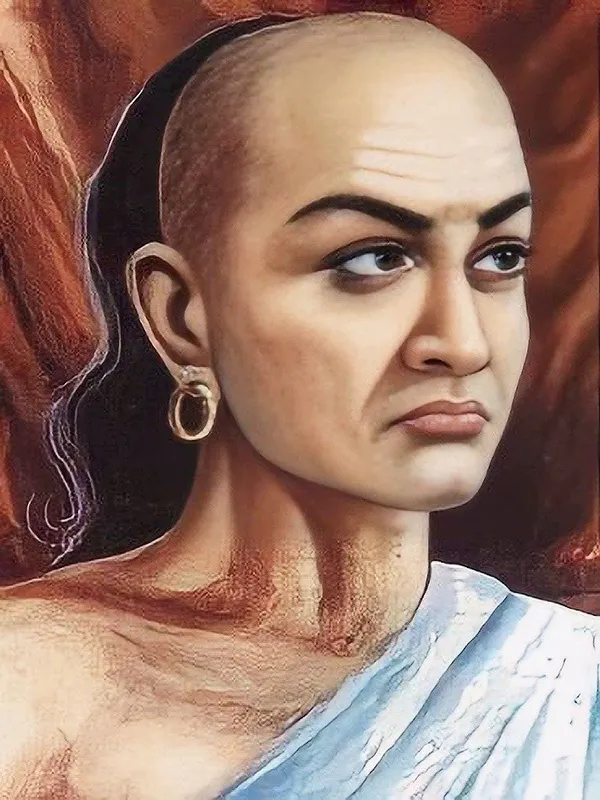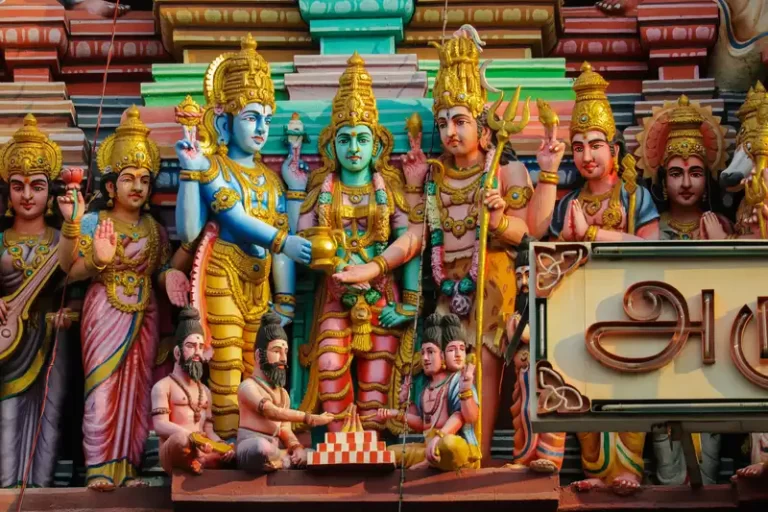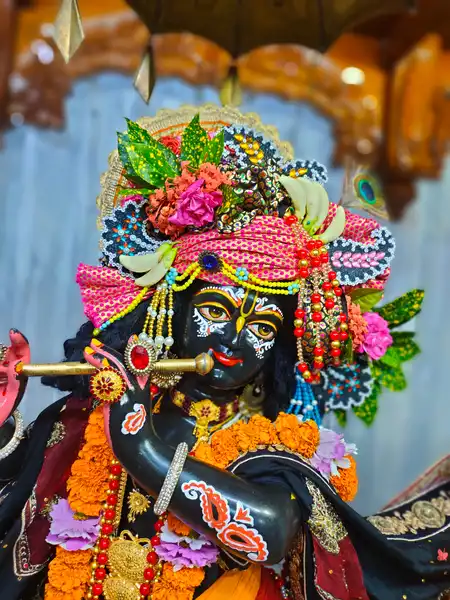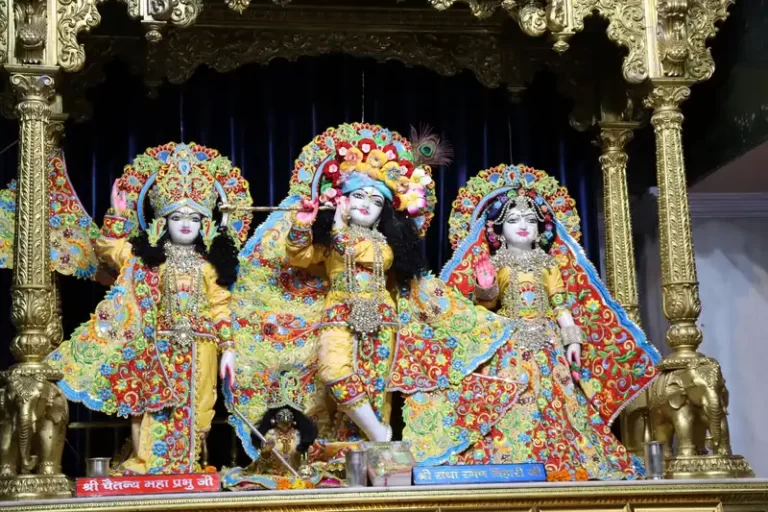Diwali: The Festival of Lights and Triumph of Goodness
Introduction:
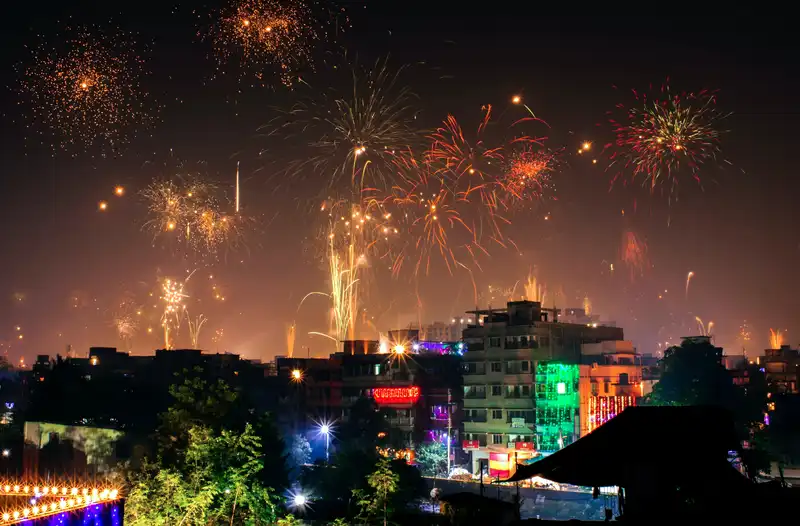
Amongst many Hindu celebrations, Diwali emerges as a radiant global emblem, universally recognized as the “Festival of Lights.” It encapsulates multifaceted cultural, spiritual, and social dimensions that transcend geographical boundaries. Deepavali, at its essence, symbolizes the triumph of illumination over obscurity and righteousness over malevolence. Its genesis is deeply embedded within Hindu legends, exemplified by the triumphant return of Lord Rama and the victorious conquest of Narakasura by Lord Krishna. These narratives imbue Diwali with profound spiritual resonance, instigating introspection and fostering positivity.
The cultural import of Diwali is eloquently conveyed through the effulgent glow of oil lamps, intricate patterns of rangoli, and the exchange of heartfelt gifts. Residences are meticulously adorned to welcome Goddess Lakshmi, the embodiment of prosperity. Families converge in harmonious unity, nurturing bonds that extend beyond immediate kinship. Grudges dissolve, and relationships are rejuvenated. Deepavali extends its radiant influence across the globe, fortifying cultural connections and promoting intercultural understanding.
Understanding Diwali:
The term “Diwali,” derived from the Sanskrit “Deepavali,” conveys profound significance as the “Row of Lights.” This appellation elegantly encapsulates the festival’s essence, which revolves around the illumination of both homes and hearts. Falling on the new moon day of Kartika in the Hindu lunar calendar, Diwali’s timing enhances its symbolism, with the radiant glow of lamps dispelling the darkness of the new moon, symbolizing the victory of light over ignorance.
Diwali’s occurrence during Kartika aligns with auspicious events, marking the conclusion of the harvest season and the commencement of a new fiscal year for businesses. The festival is intricately intertwined with various deities, legends, and myths. The prevailing narrative of Lord Rama’s return from exile, culminating in his triumph over the demon king Ravana, serves as a prominent Diwali allegory, emblematic of righteousness prevailing. Additionally, Diwali commemorates Lord Krishna’s conquest of the demon Narakasura, reinstating the triumph of virtue. The narrative of Lord Vishnu’s Vamana avatar defeating King Bali adds yet another layer to the festival’s rich tapestry, unifying the diverse beliefs within Hinduism.
Beyond the realm of legends, Deepavali venerates deities such as Lakshmi, Ganesha, and Saraswati, with a special emphasis on Goddess Lakshmi, who symbolizes wealth. Devotees fervently seek her blessings for abundance and prosperity during this auspicious occasion.
Spiritual Significance of Diwali:
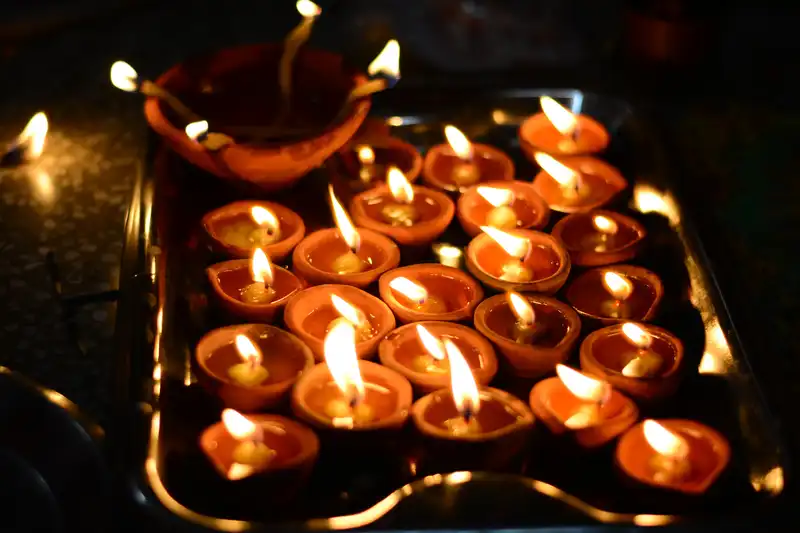
Diwali’s celebration transcends ostentatious displays and exuberant festivities; it delves into the profound spiritual depths of Hindu philosophy. At its core, Diwali serves as a profound commemoration of spiritual truths, resonating deeply with those on a quest for inner enlightenment. Its essence lies in the symbolic triumph of light over darkness, knowledge over ignorance, and goodness over evil – all pivotal aspects of the journey toward self-discovery.
The symbolism of light conquering darkness encompasses both physical and metaphorical dimensions, mirroring humanity’s timeless struggle for spiritual insight. It serves as a representation of the ongoing battle between positivity and negativity within oneself. Deepavali imparts the invaluable lesson that the radiance of wisdom can dispel the darkness of ignorance, fear, and attachment within.
Furthermore, Diwali emphasizes the supreme importance of knowledge in overcoming ignorance. Ignorance is identified as a root cause of suffering, and Diwali underscores the pursuit of both external and internal knowledge. It encourages the questioning of societal norms, the defiance of self-imposed limitations, and the embracement of lifelong learning to transcend the confines of the mind.
The concept of good triumphing over evil in Deepavali signifies the nurturing of virtuous qualities within oneself. It acts as a catalyst for introspection, akin to the inner battle of gods against malevolence. The recognition of inner duality prompts personal transformation and alignment with higher moral principles.
In essence, the festival symbolizes the awakening of inner light and personal betterment. The act of lighting lamps serves as a metaphor for igniting the divine spark within – the Atman or soul. It serves as a poignant reminder that the journey towards self-realization commences from within, illuminating the path towards self-awareness. Just as lamps dispel physical darkness, inner light dispels the darkness of ignorance, paving the way for clarity of thought and purpose.
Preparation and Festive Vibes:
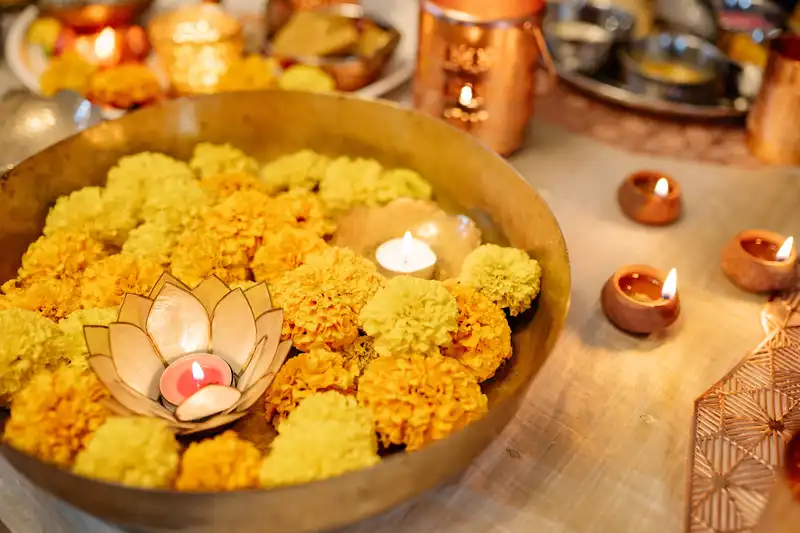
Diwali’s celebration is a meticulous process that intricately intertwines both the physical and spiritual dimensions. As the festival’s arrival draws near, a flurry of activities ensues, as homes and hearts prepare to embrace the Festival of Lights. These preparations extend beyond the superficial, mirroring the internal cleansing and illumination that Diwali symbolizes.
A central element of these preparations revolves around thorough home cleaning. This practice goes beyond mere physical tidying; it is a conscious effort to purge the environment of negativity and welcome positive energies. As dust and clutter are removed, living spaces are transformed into canvases for vibrant embellishments.
Elaborate decorations adorn homes, creating a rich tapestry of colors and textures. Rangoli patterns, crafted from colored powders, rice, or flower petals, grace doorsteps, and courtyards, infusing an artistic flair. These designs carry both cultural and spiritual significance, symbolizing welcome, auspiciousness, and the transient nature of life.
The act of illuminating homes holds equal importance. Rows of oil lamps and candles cast a warm and inviting radiance that dispels darkness. Beyond merely illuminating physical spaces, this ritual invokes the inner divine light, guiding individuals toward self-awareness and spiritual awakening. The interplay of light and shadows during Deepavali serves as a metaphor for the ongoing struggle between knowledge (represented by light) and ignorance (symbolized by darkness).
Vibrant decorations embellish homes and public spaces alike, elevating the festive atmosphere to new heights. Strings of lights and lanterns create a mesmerizing spectacle, capturing the celebratory spirit of the occasion. Additionally, the act of exchanging gifts, sweets, and treats among friends, family, and neighbors fosters unity and togetherness, reinforcing Diwali’s profound societal significance.
Legends and Mythology:
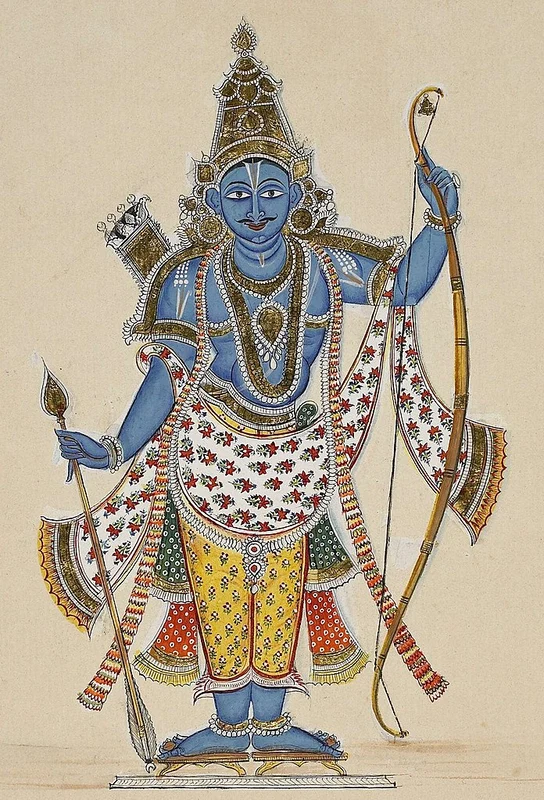
Diwali shines with an intricate tapestry of narratives and tales that radiate its profound spiritual essence, embedding timeless ethical teachings. Among these narratives, the story of Lord Rama’s return after fourteen years of exile and his victorious conquest of the demon king Ravana takes center stage. This narrative embodies the triumph of virtue over malevolence, resonating with the enduring struggle of good versus evil. Lord Rama’s unwavering commitment to dharma and resilience in the face of adversity serves as a poignant reminder to uphold ethical principles, even when confronted with challenges.
Another captivating tale revolves around Lord Krishna’s vanquishing of the demon Narakasura. Narakasura symbolized ignorance and ego, spreading darkness and fear. Lord Krishna’s triumph symbolizes the victory of light over darkness and underscores the importance of confronting our inner struggles. This story metaphorically mirrors our battles against negative traits, urging us to seek wisdom and nurture virtuous qualities.
Goddess Lakshmi’s association with Diwali centers on her role as the bestower of wealth and prosperity. Her arrival is eagerly anticipated, and believed to bring both material and spiritual blessings. However, beyond materialism, Goddess Lakshmi embodies qualities such as compassion and humility. Her presence underscores the notion that genuine wealth encompasses the richness of character and the willingness to share one’s blessings with others.
These intricately woven tales, an integral part of Diwali’s cultural tapestry, offer timeless spiritual lessons that transcend cultural boundaries. They illuminate the inner and outer struggle between light and darkness, inspiring ethical living, the cultivation of virtuous attributes, and the pursuit of knowledge. They emphasize unity, the strength of familial bonds, and the spirit of generosity. Ultimately, the stories of Diwali serve as guiding lights, illuminating the path to self-improvement, spiritual growth, and a purposeful life.
Rituals and Traditions:
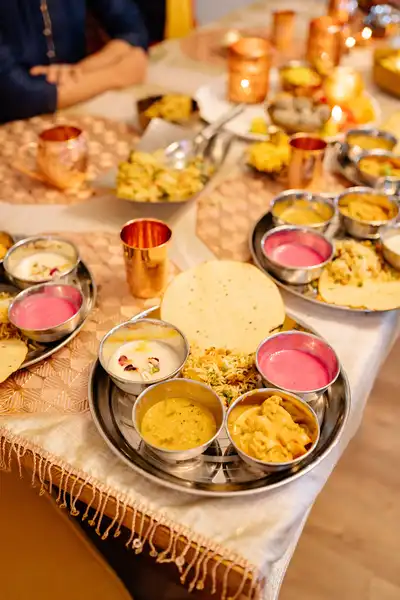
Diwali, known as the Festival of Lights, is enriched by meaningful rituals that infuse its celebrations with profound spiritual significance. Among these rituals, the Lakshmi Puja stands out as a prominent practice. This heartfelt worship of Goddess Lakshmi, symbolizing wealth and abundance, involves the creation of a special altar adorned with offerings and the recitation of hymns. Beyond its association with material wealth, this ritual honors the qualities of compassion and generosity embodied by the goddess.
The lighting of diyas holds immense significance in Diwali celebrations. These lamps symbolize the inner light that dispels ignorance. Lighting a diya represents a conscious act of enlightenment and an invitation to positive energies. This custom reinforces the festival’s underlying message of eradicating negativity and embracing positivity.
The exchange of gifts and the sharing of sweets are integral aspects of Diwali festivities. The act of gifting symbolizes the spreading of joy and goodwill, strengthening bonds among individuals. Sharing sweets embodies the sweetness of life and the act of sharing blessings with others. These practices foster a sense of community unity.
Families play a central role in Diwali celebrations. Collective cleaning and decorating efforts highlight the importance of family unity. Group prayers and rituals create a sense of togetherness and devotion, emphasizing spiritual growth within the bonds of kinship.
Traditionally, Diwali celebrations often included firecrackers, symbolizing the victory of light over darkness. However, growing environmental concerns have led some families to adopt eco-friendly practices, prioritizing spirituality over excessive fireworks and noise. This shift reflects a broader awareness of the need for sustainable and environmentally conscious celebrations.
Fireworks and Joyous Celebrations:
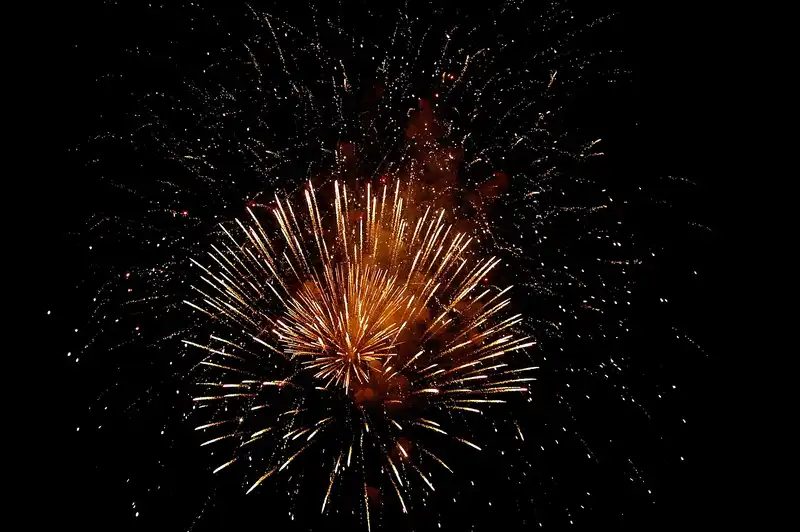
Fireworks and firecrackers have emerged as vibrant elements of Diwali celebrations, injecting excitement and festivity into the atmosphere. This age-old tradition traces its roots back centuries, grounded in the belief that the bright lights and loud noises they produce repel evil spirits and attract good fortune.
Without a doubt, fireworks add joy and merriment to Deepavali. The night sky aglow with colorful displays creates enchanting spectacles that captivate individuals of all ages. The bursts of colors, shimmering trails, and resounding booms inspire awe, symbolizing the triumph of light over darkness. These communal celebrations bring people together to witness and partake in the exhilaration of these displays.
However, it is essential to address safety and environmental concerns alongside the joyous celebrations. Fireworks inherently carry safety risks, potentially leading to injuries if not handled responsibly. Observing safety guidelines, exercising caution, and ensuring the well-being of all become paramount when enjoying fireworks.
Environmental impact has gained increasing attention in recent years. Fireworks release pollutants and chemicals, contributing to air pollution and the deterioration of air quality. The noise generated by fireworks can distress animals and pets, often triggering anxiety. Moreover, fireworks contribute to waste and litter, further exacerbating environmental pollution.
In light of these concerns, there have been discussions about adopting more eco-friendly practices in some communities. This includes opting for quieter displays, reducing the use of fireworks, or even forgoing them altogether in favor of more environmentally-conscious celebrations. This shift underscores a growing awareness of the need to balance the excitement of Diwali festivities with the preservation of safety and the environment.
Diwali’s Global Reach:
Diwali’s radiant celebration has transcended geographical boundaries, spreading its luminous charm to diverse corners of the world. Beyond its origins in India, Diwali has been warmly embraced by various communities in different countries, each infusing the festival with their unique cultural interpretations and traditions.
In Nepal, for example, Diwali is observed as Tihar, spanning five days, and dedicated not only to Goddess Lakshmi but also to animals such as cows, crows, and dogs. Similarly, in Sri Lanka, where it is referred to as Deepavali, the festival involves the lighting of lamps and the exchange of sweets among family and friends.
In countries like the United States, Canada, and the United Kingdom, Diwali has gained prominence as a significant cultural celebration. Vibrant festivities hosted by Indian diaspora communities showcase traditional performances, cuisine, and music. It is not uncommon for government officials to participate in these celebrations, reflecting the global cultural significance of Diwali.
Australia also wholeheartedly embraces Diwali, with Melbourne hosting a grand celebration that draws people from diverse backgrounds. This cross-cultural exchange exemplifies Diwali’s power to bridge cultural gaps and foster understanding among diverse communities.
The universal celebration of Deepavali has led to its recognition by governments in various countries. Buildings are illuminated, and official greetings are extended, underscoring its significance for the diaspora and enriching the tapestry of cultural diversity.
Cultural and Regional Variations:
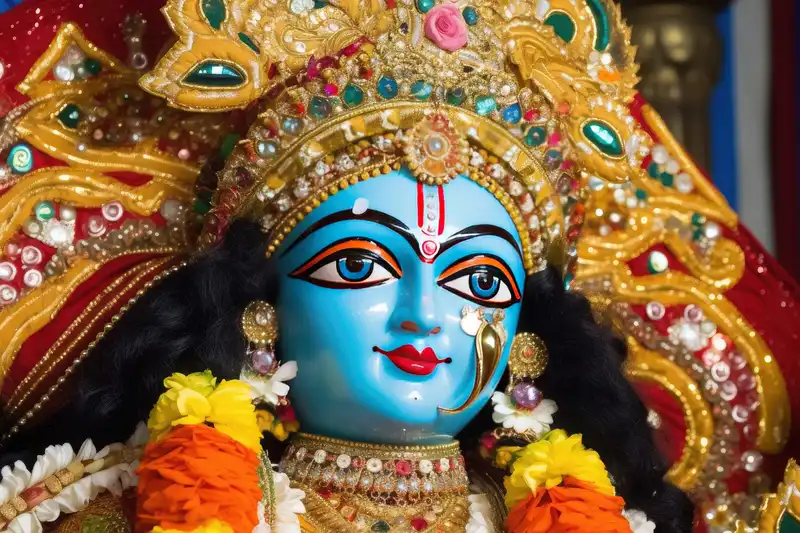
The exuberance of Diwali celebrations mirrors the rich tapestry of communities partaking in them, resulting in a captivating array of practices and rituals that vary across cultures and regions. This diversity highlights the intricate depth of human expression and the festival’s remarkable ability to adapt to local contexts.
In the northern regions of India, Diwali seamlessly weaves into the narrative of the Ramayana, paying tribute to Lord Rama’s triumphant return to Ayodhya. Clay lamps, known as diyas, illuminate homes, while the sky is filled with the bursts of firecrackers symbolizing the victory of light. Delectable treats like ladoos and barfis grace tables and doorsteps are adorned with intricate Rangoli designs.
Across southern India, Diwali harmonizes with Pongal, a celebration of the harvest. Homes are adorned with mango leaves, and oil baths offer both physical and spiritual purification. Elaborate Kolam patterns crafted from rice flour embellish floors, and delicious snacks like murukku and adhirasam are savored.
In the western regions, particularly in Gujarat and Maharashtra, Diwali aligns with New Year festivities. Homes shine with meticulous cleanliness and ornate decorations, serving as the backdrop for Lakshmi Puja. The exchange of vermilion, turmeric, and delectable treats like anarse and chakli is a customary practice.
Eastern India pays homage to Goddess Kali during Diwali. Streets are illuminated with clay lamps and candles, while alpana designs grace doorsteps. Sweets such as rasgulla and sandesh are offered as tokens of reverence.
In Nepal, Tihar unfolds over five days, each marked by its unique customs. Cows are venerated for prosperity and abundance, while dogs are honored for their loyalty. Each day brings forth distinct rituals, including the lighting of oil lamps and the creation of rangoli designs.
In Malaysia, the Indian community celebrates Diwali, known as “Deepavali.” Homes come alive with the radiance of lamps and intricate kolam patterns. Delicacies like murukku and halwa are savored, and the tradition of open houses extends a warm welcome to both friends and neighbors.
These regional nuances encapsulate the diverse cultural tapestry of Diwali and its ever-evolving traditions. Special culinary delights, folk performances, and unique practices infuse each region’s individual essence into the celebration. Ultimately, these diverse customs underscore the universal spirit of Deepavali, characterized by light, joy, and unity, and celebrate the inherent beauty of variation.
Diwali and Interfaith Harmony:
Diwali radiates as a luminous symbol of unity, respect, and interfaith understanding, embodying values that transcend religious and cultural boundaries. Its universal concepts of light, the triumph over darkness, and the pursuit of goodness resonate with individuals of diverse heritages, nurturing a sense of shared humanity.
People from various faiths and cultures actively participate in Diwali festivities, not merely as observers but as enthusiastic participants. Schools, workplaces, and communities come together in celebration, fostering inclusiveness and camaraderie. This collective spirit underscores Diwali’s evolution from its religious origins into a celebration of joy, optimism, and togetherness.
On a global scale, numerous events and initiatives are dedicated to promoting multiculturalism during Diwali. Cultural institutions, community centers, and educational establishments often organize Diwali-themed gatherings, serving as platforms for individuals from different backgrounds to engage with and appreciate the festival. These occasions feature a wide range of activities, including dance performances, art exhibitions, traditional culinary tastings, and workshops, cultivating cross-cultural exchange and understanding.
Furthermore, Diwali catalyzes an increase in interfaith dialogues and partnerships, exemplifying its capacity to nurture respect and mutual admiration. The ceremonial lighting of the Diwali lamp often welcomes representatives from diverse faiths, highlighting the festival’s role as a bridge builder among communities.
In regions with significant Indian diasporas, local authorities and organizations acknowledge the cultural significance of Diwali. Official commemorations, including lighting ceremonies, cultural exhibitions, and public addresses, emphasize unity and respect while honoring the contributions of diverse communities.
Contemporary Relevance and Message:
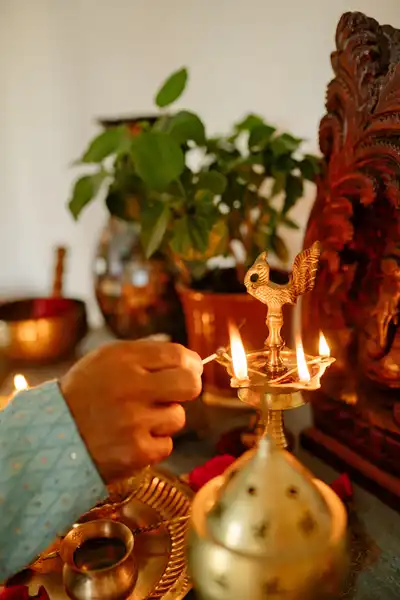
Diwali, the Festival of Lights, has transcended both temporal and cultural boundaries, maintaining its profound relevance in the modern age. Rooted in ancient Indian mythology, this celebration of light’s triumph over darkness, knowledge’s conquest over ignorance, and virtue’s victory over malevolence continues to resonate across diverse spectra. In an era characterized by uncertainty and discord, the symbolism inherent in Diwali mirrors the human experience, reflecting the ongoing struggle between our inner conflicts and the aspiration for positive transformation.
Diwali’s essence extends beyond conventional revelry; it carries messages that remain profoundly relevant in today’s fast-paced society. The victory of light over darkness ignites the flame of hope, even in the darkest of circumstances. Its underlying theme of benevolence underscores the importance of empathy and understanding, forging connections that bridge divides within our societies. Furthermore, Diwali’s emphasis on rebirth serves as a poignant reminder that personal growth is an ongoing journey, with each moment offering an opportunity to shed old patterns and embrace new beginnings.
For those eager to delve into the depths of Deepavali’s significance, a wealth of resources awaits, facilitating the observance of the festival with mindfulness and depth. Books and digital articles decode the mythological and cultural intricacies, providing insights into the narratives that underlie the festivities. Workshops and gatherings offer opportunities to participate in rituals with profound understanding, enabling an authentic connection to the festival’s origins. Mindfulness practices, such as meditation and gratitude exercises, can be integrated into Diwali commemorations, fostering a heightened awareness of the blessings that adorn our lives.
Conclusion:
Diwali, a revered festival cherished by various cultures, encapsulates a spiritual core that transcends its vibrant festivities. At its essence, Diwali signifies the triumph of light over darkness, knowledge over ignorance, and virtue over malevolence. Rooted in ancient Indian mythology, the symbolic significance of the festival resonates as a guiding light of hope and renewal.
Beyond its cultural splendor, Deepavali offers an opportunity for personal growth and the nurturing of positive ideals. Amidst the celebrations, introspection into our own journey from shadows to light, from ignorance to wisdom, finds a meaningful resonance. By approaching the festival with mindfulness, its vitality can be harnessed to ignite the flames of kindness, empathy, and understanding within us. This endeavor enriches not only our individual lives but also fosters the collective enlightenment of the world.
I aspire for this article to provide you with assistance. Should you discover value within these words, kindly contemplate sharing them with your loved ones. I invite you to spare a moment to offer your thoughts and appraisals below. For further remarkable content akin to this, I encourage you to delve into our website. Additionally, I extend an invitation to subscribe to my YouTube channel for forthcoming materials of similar nature. Lastly, feel unrestrained to establish a connection with me through social media. Wishing you a splendid day ahead!
हरि ॐ तत्सत्
FAQs:
Here are some frequently asked questions (FAQs) regarding the festival of Diwali:

